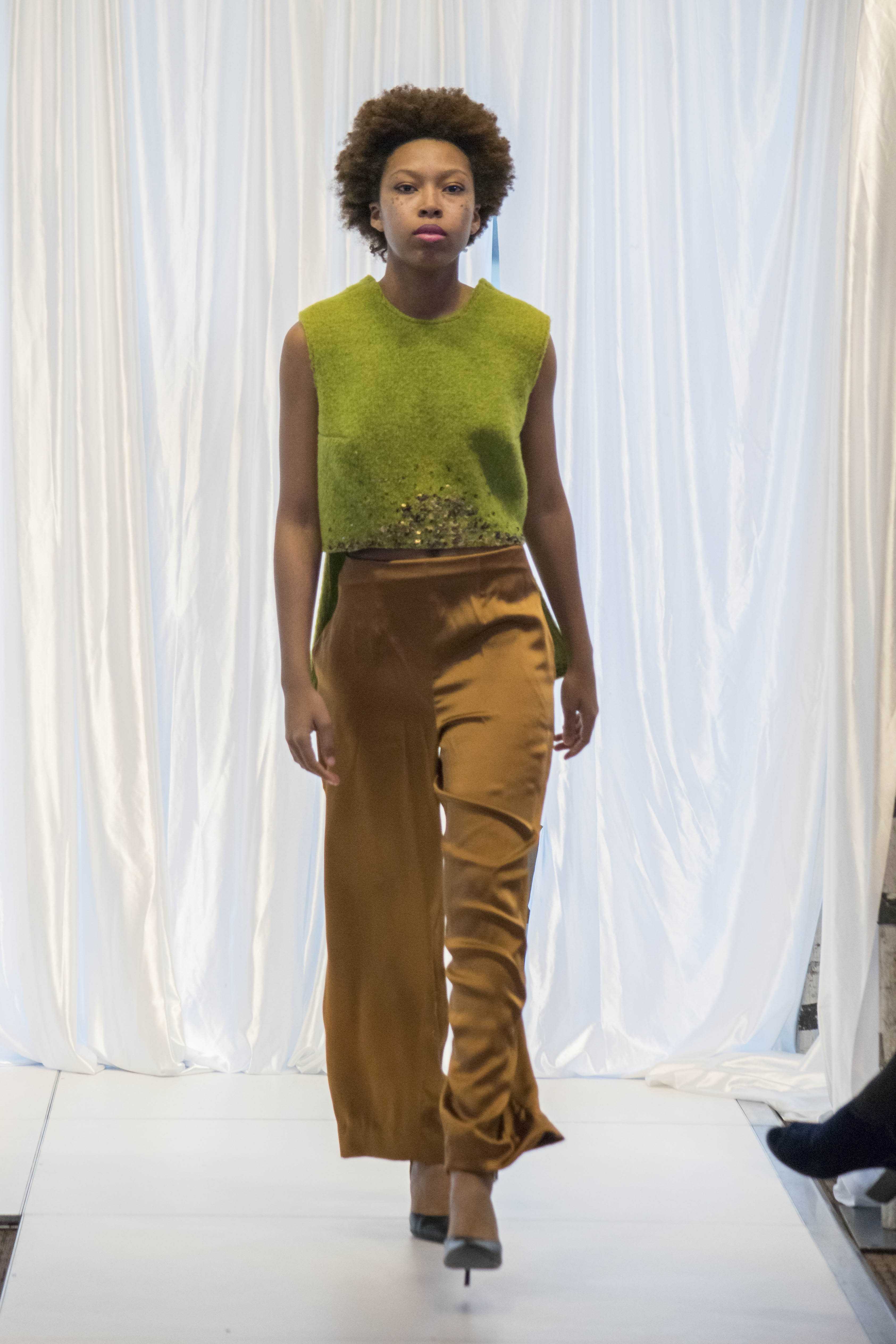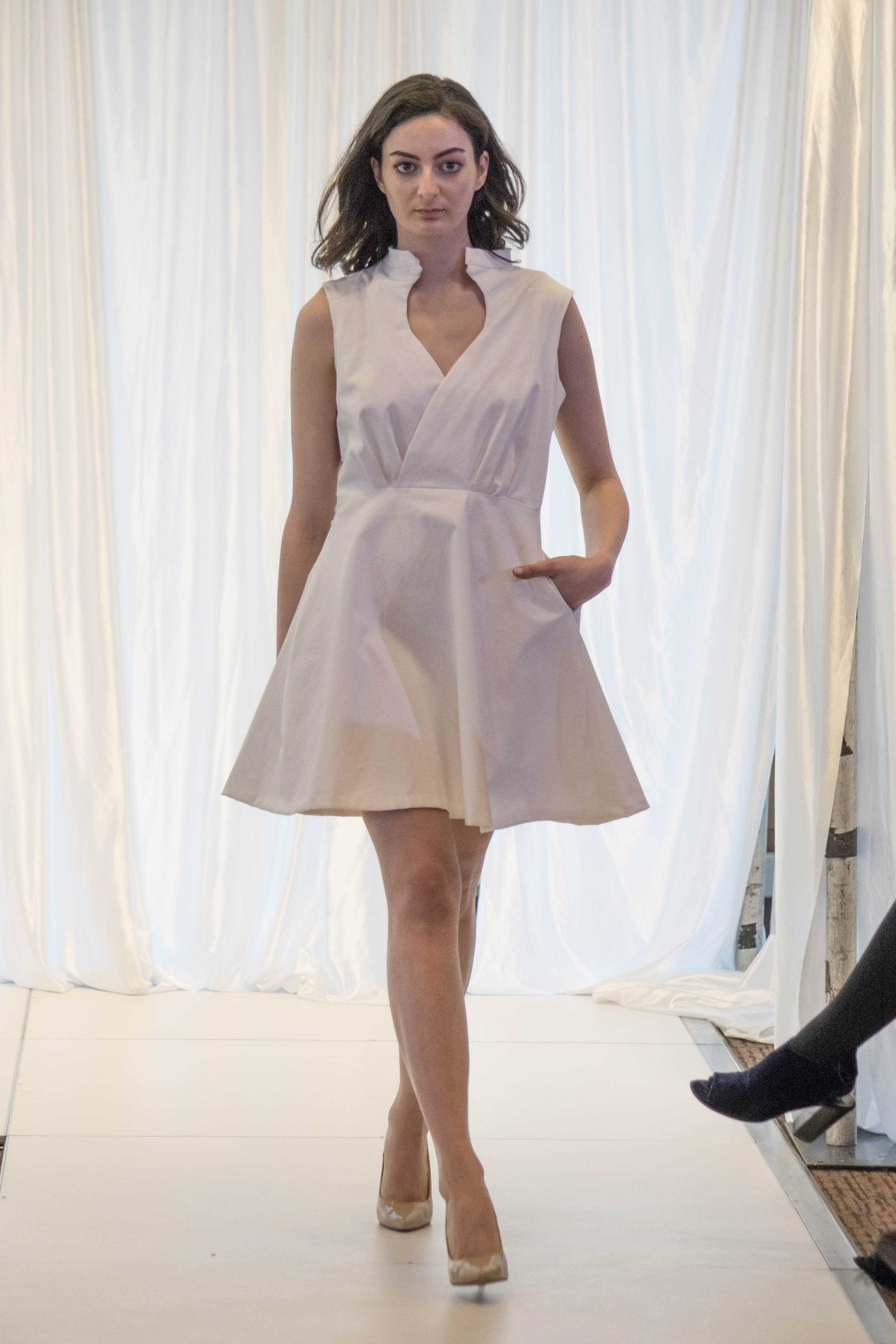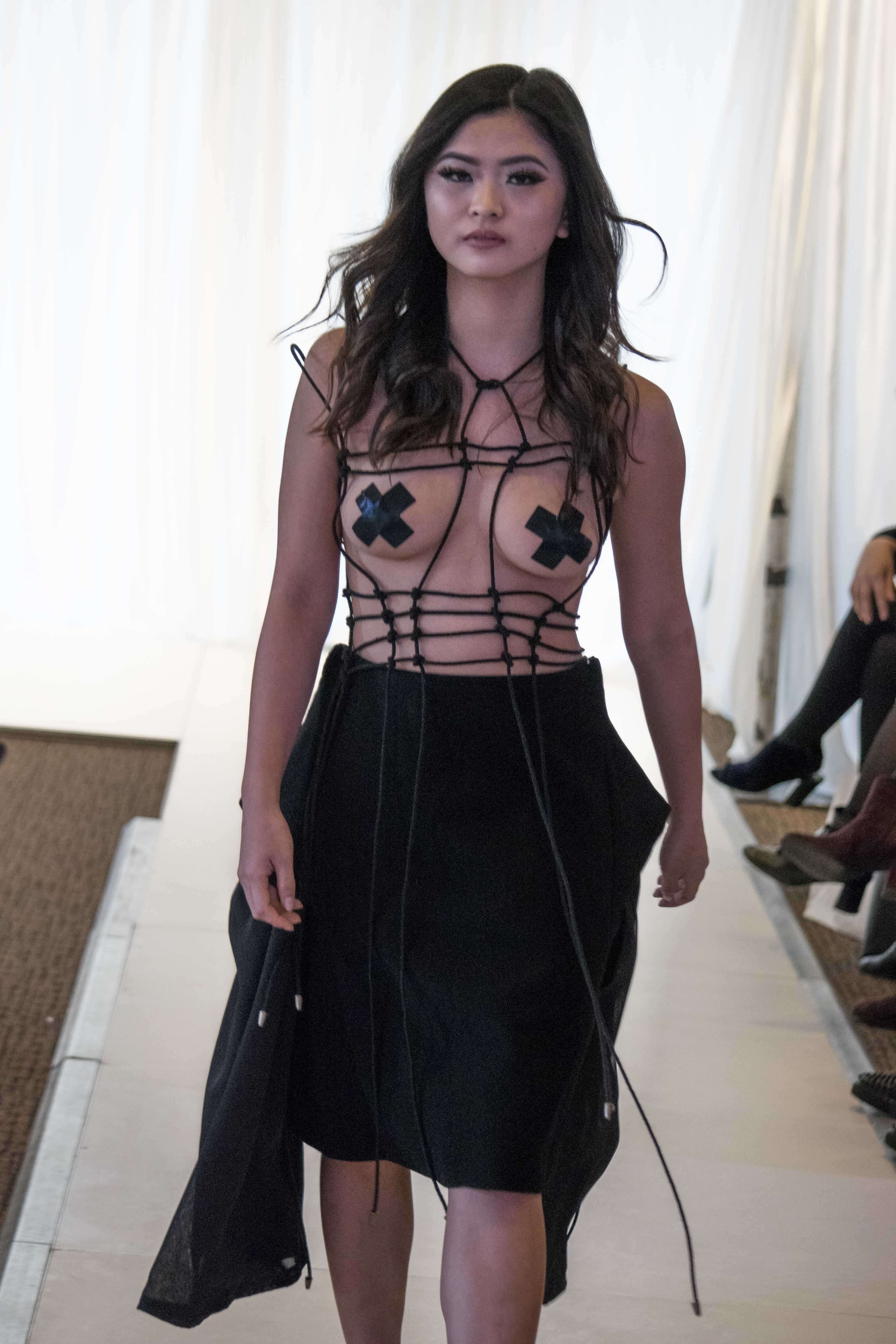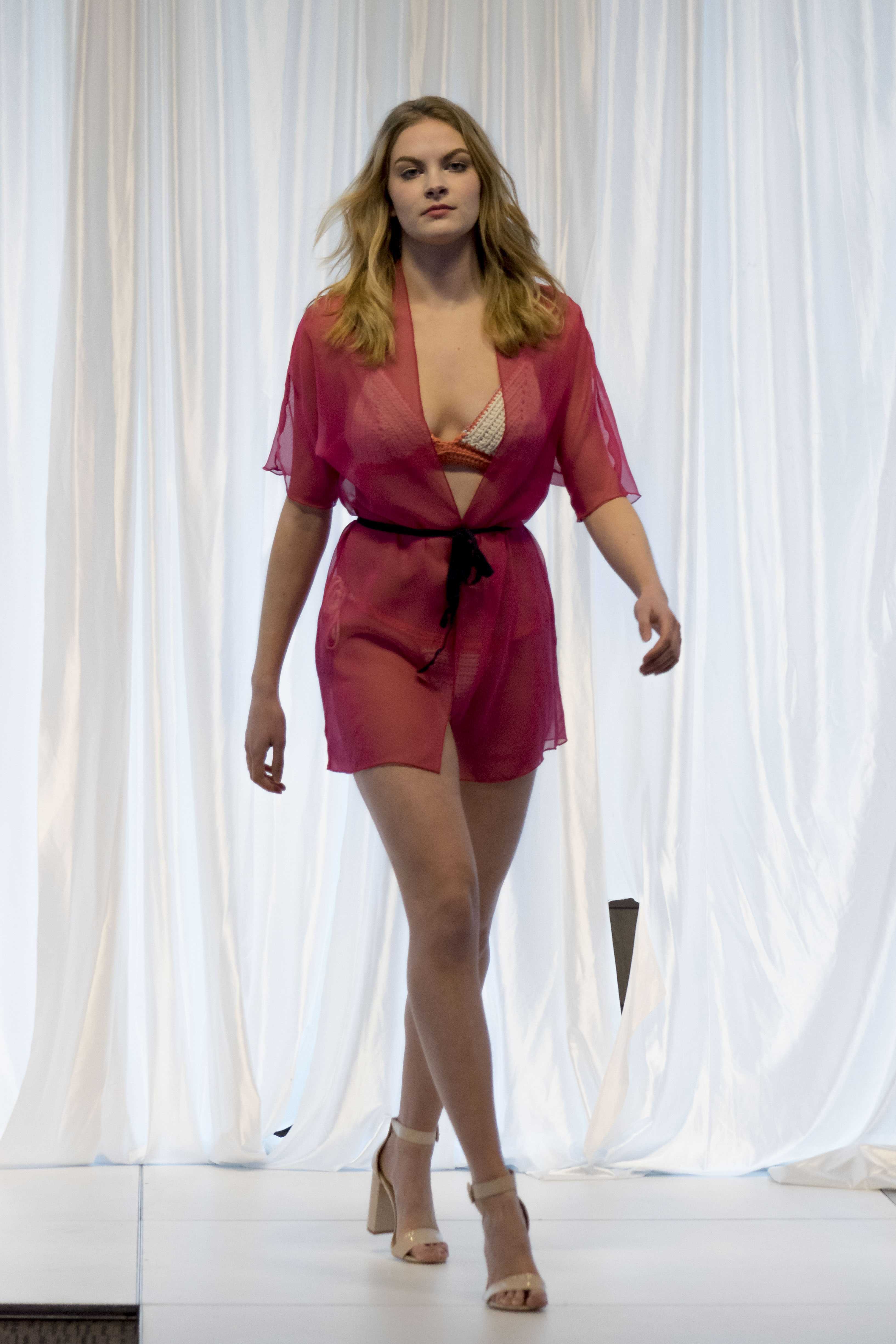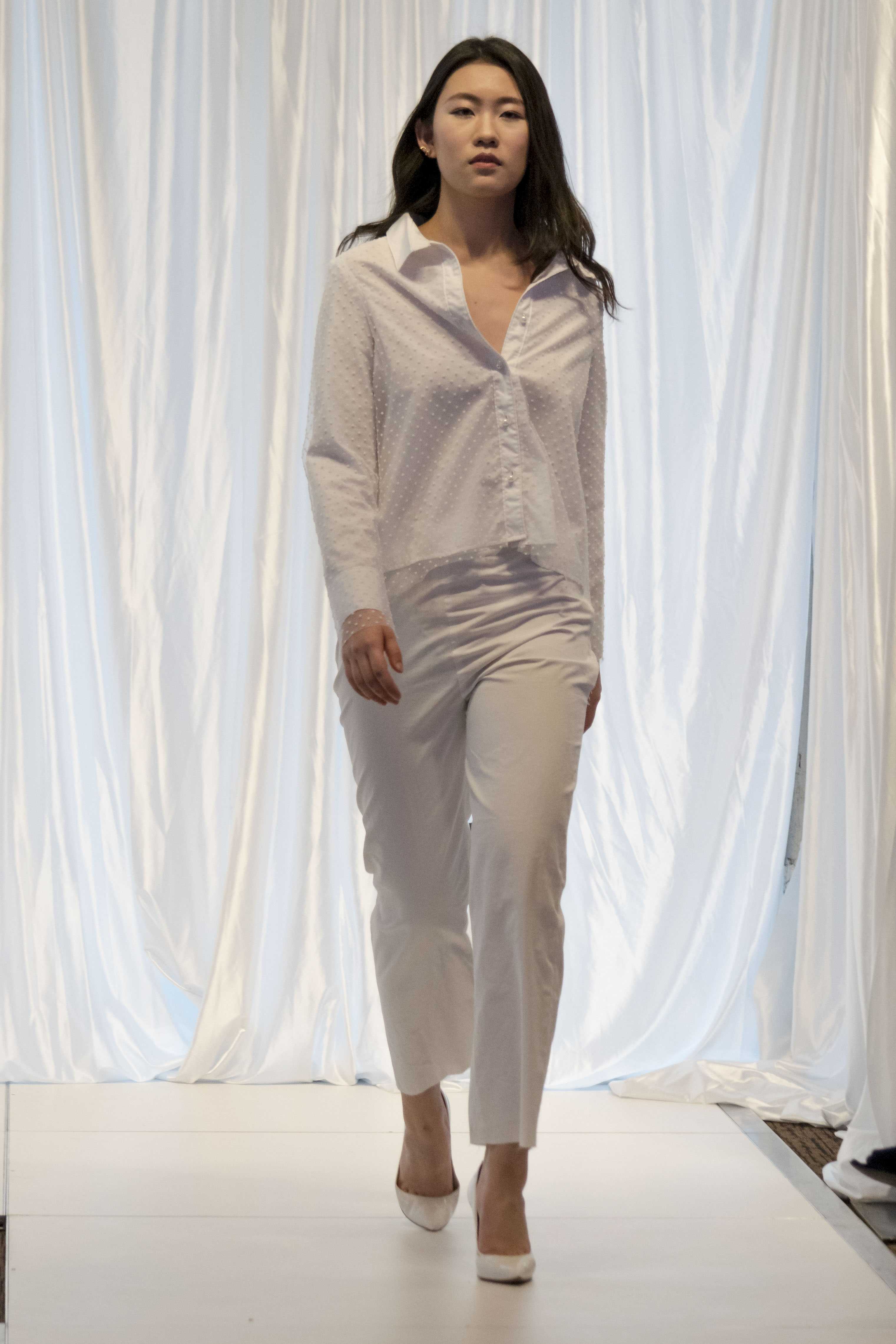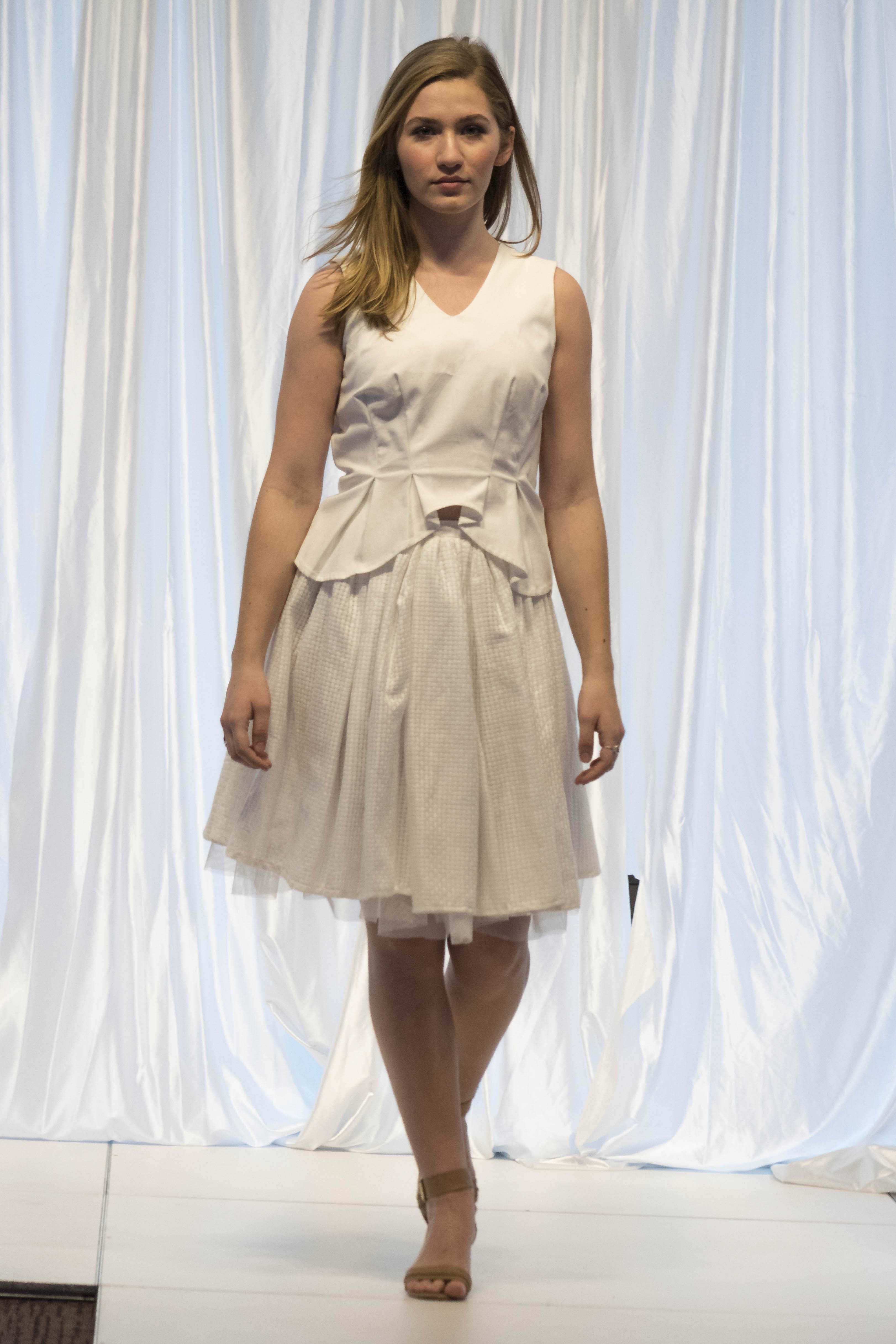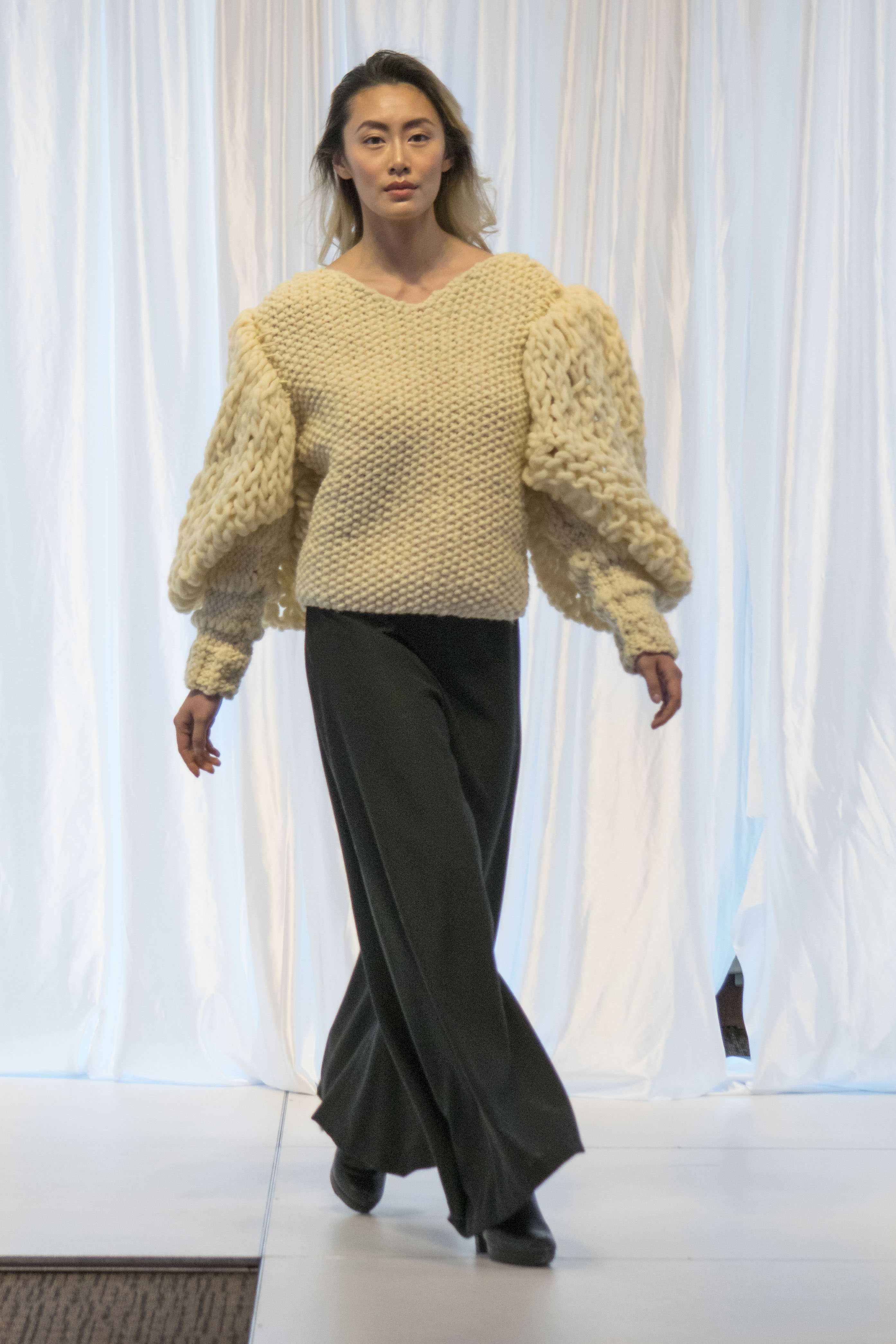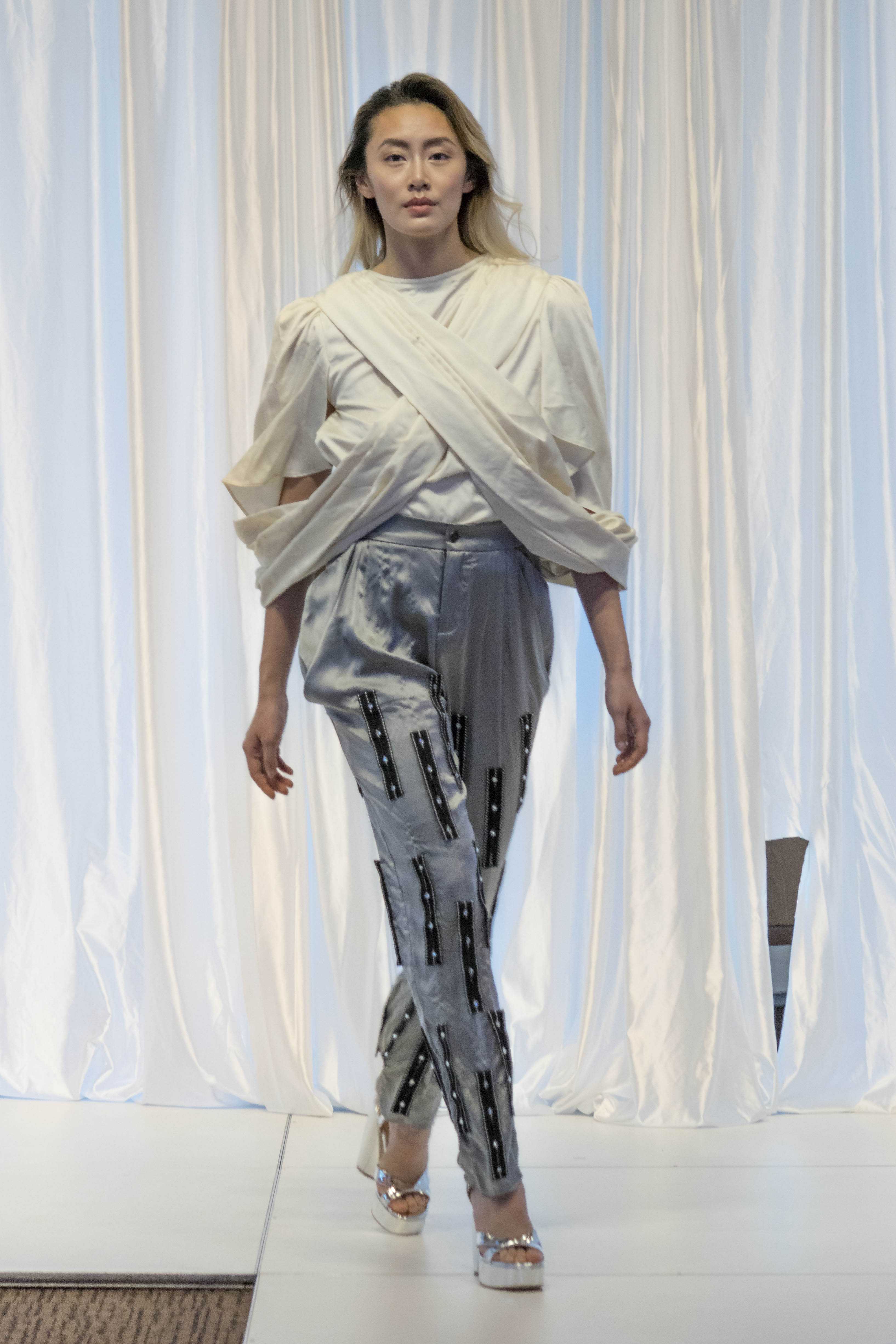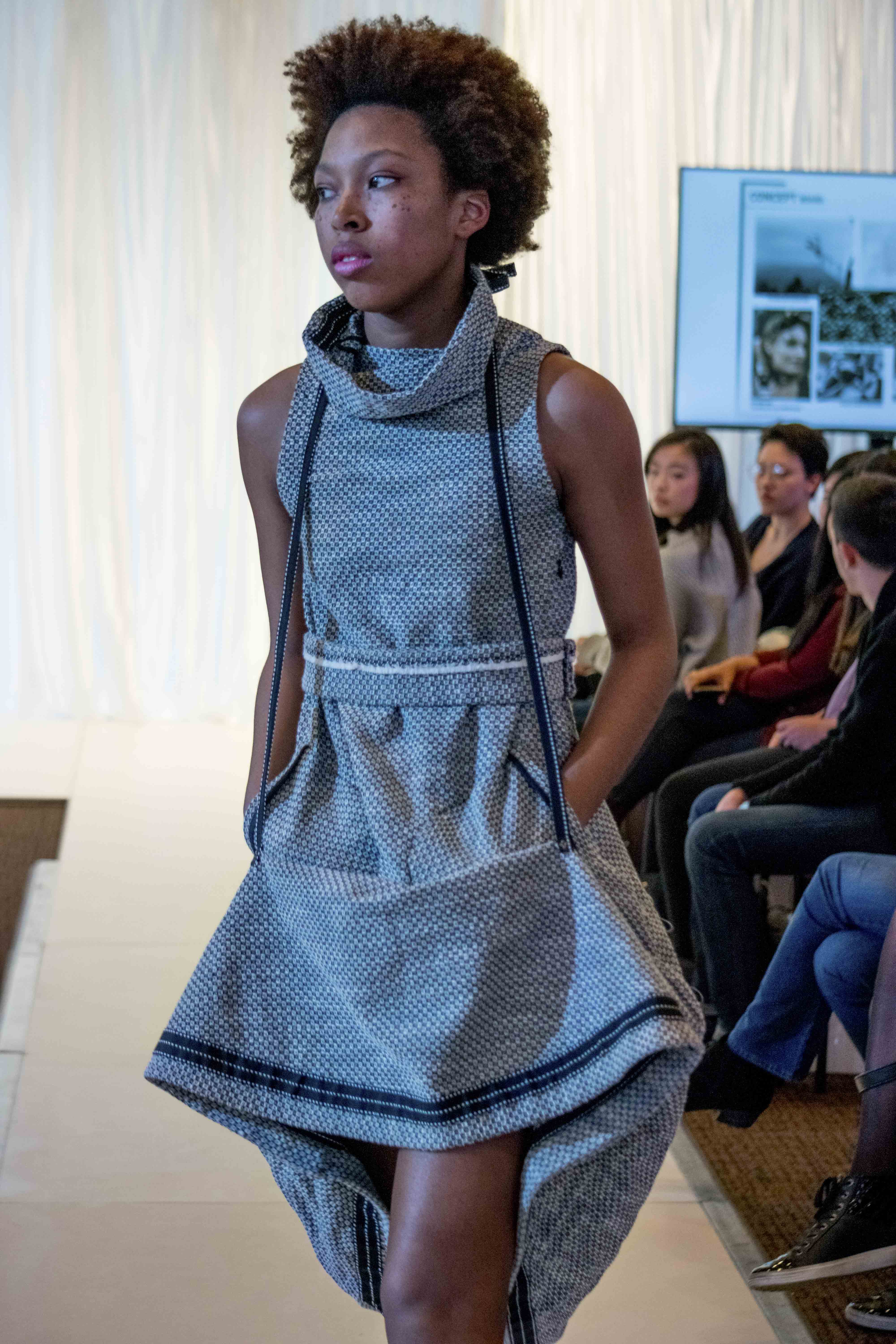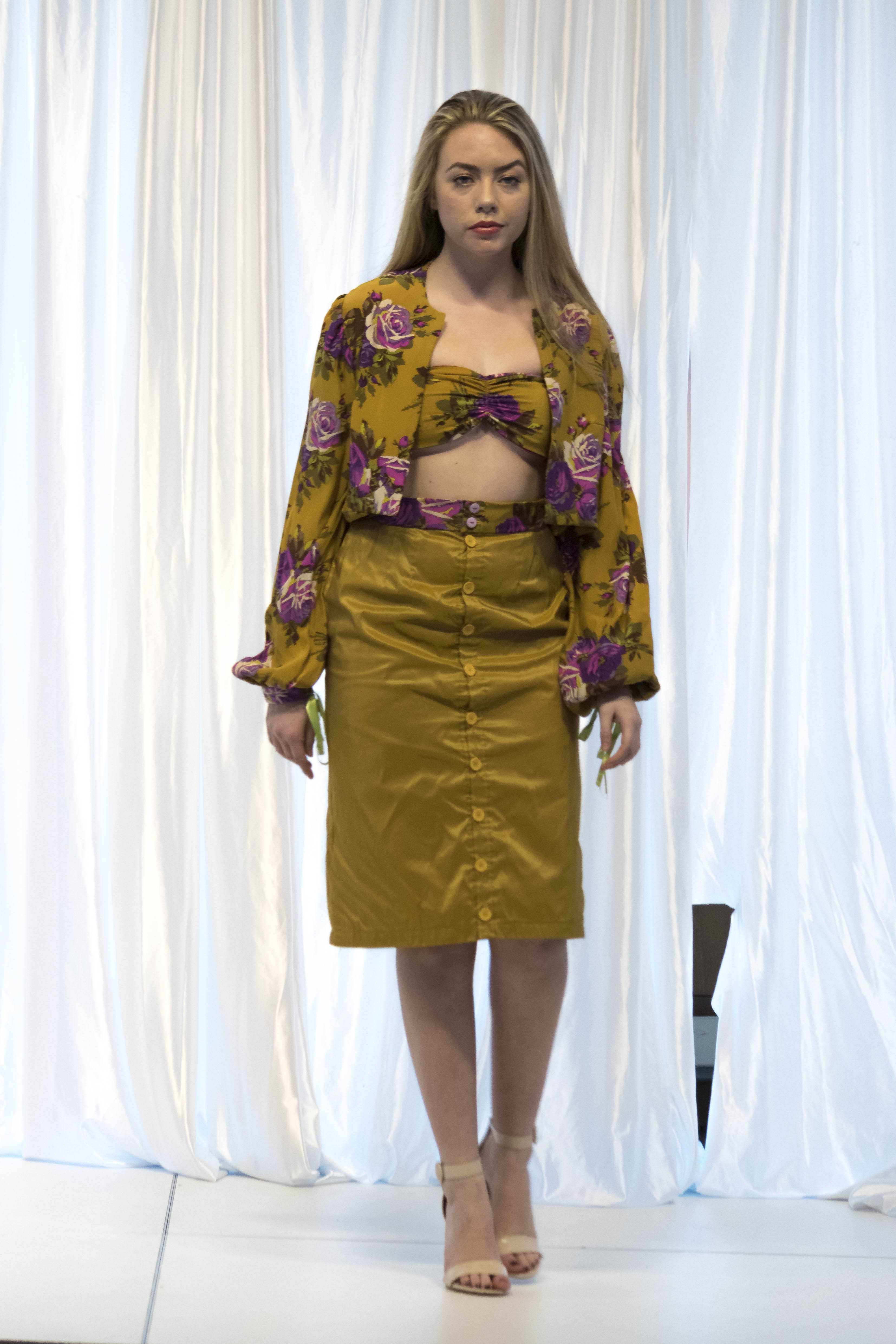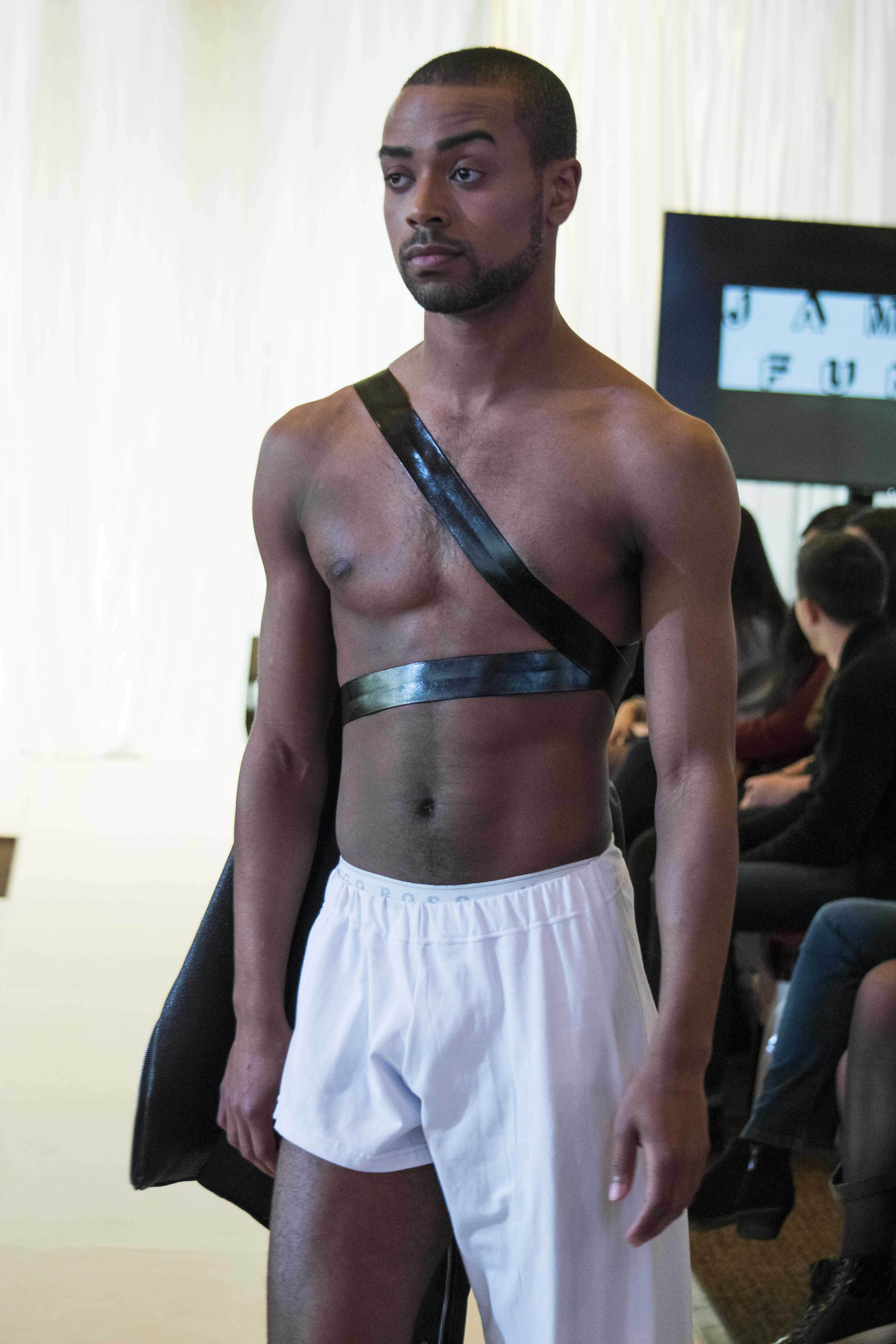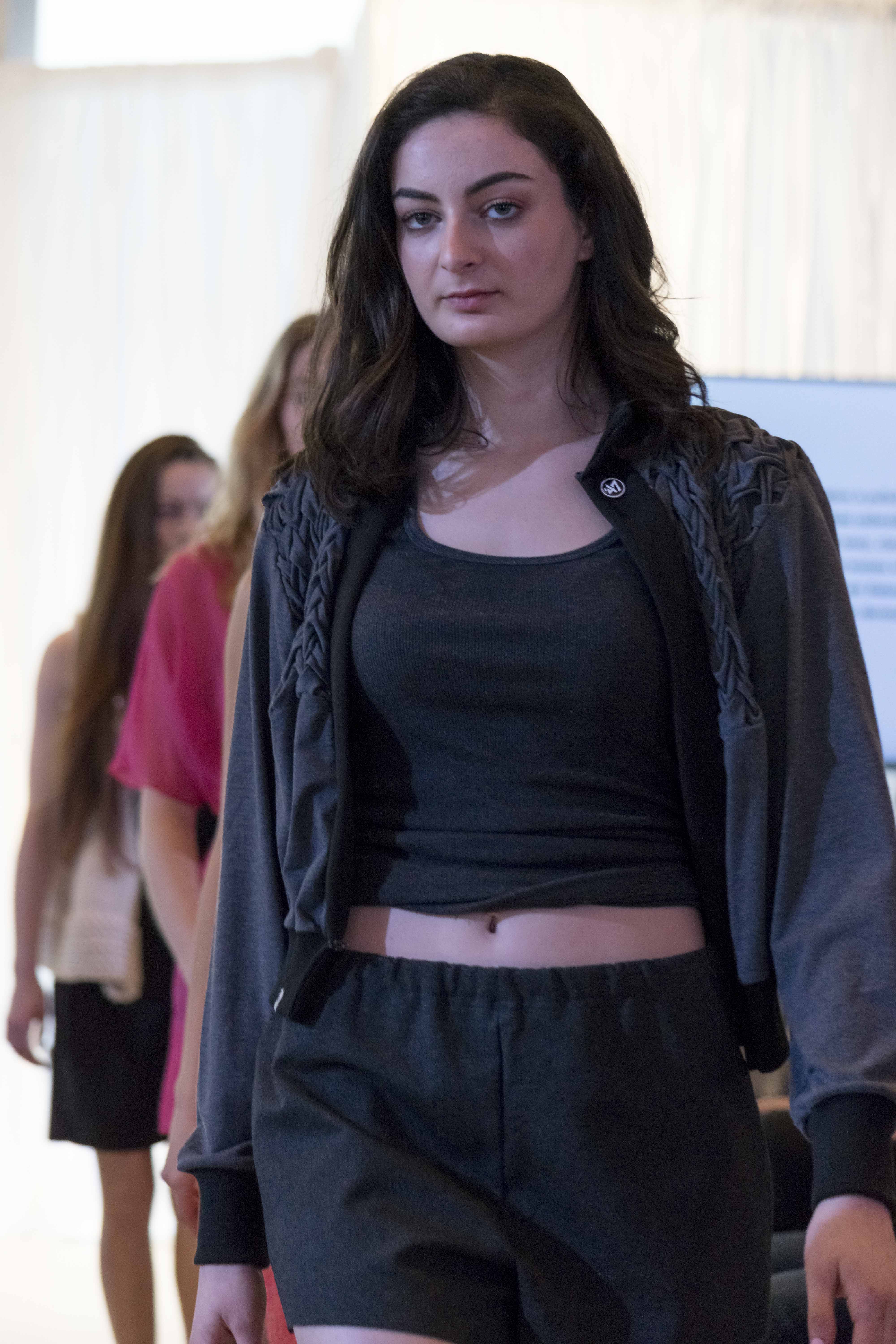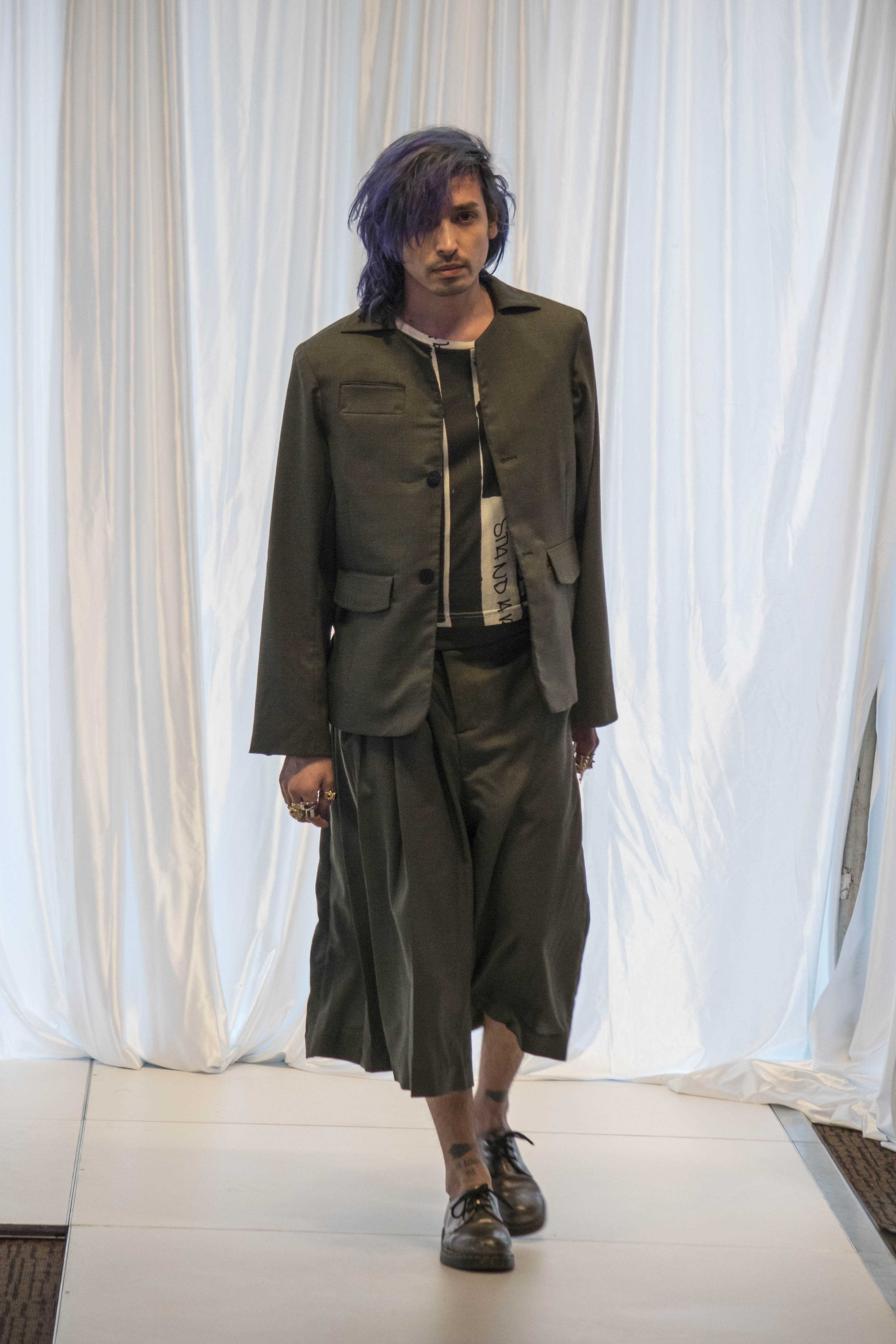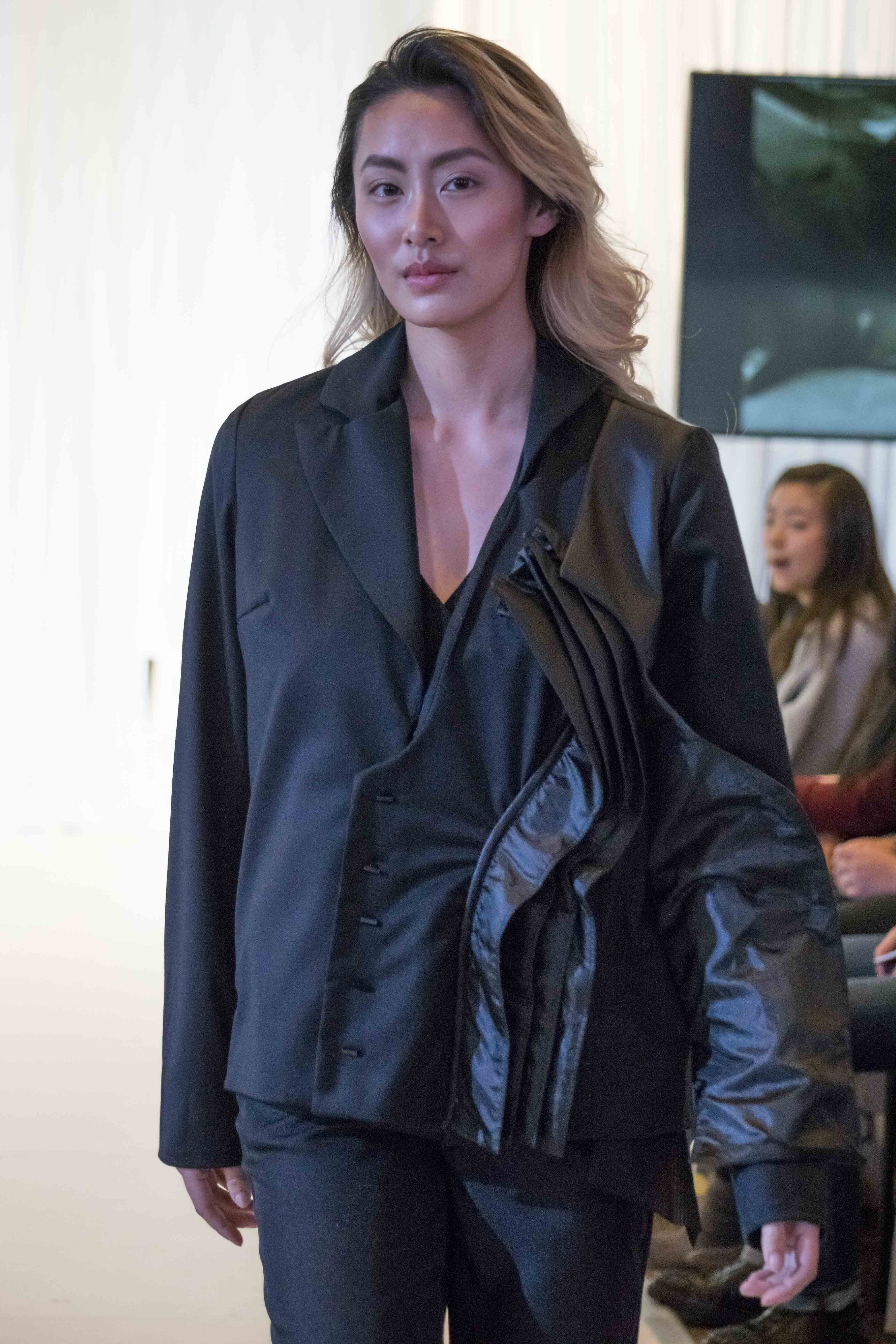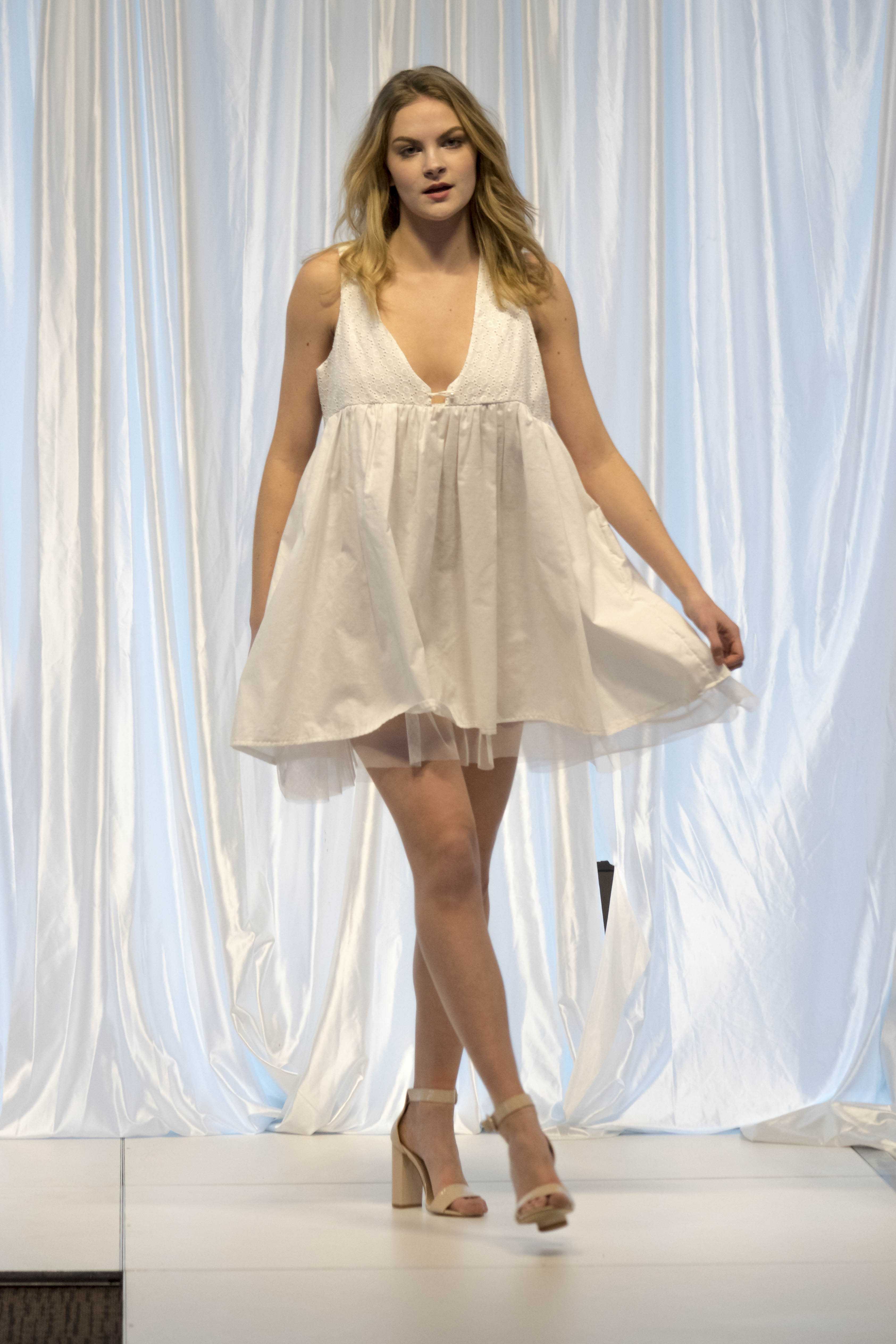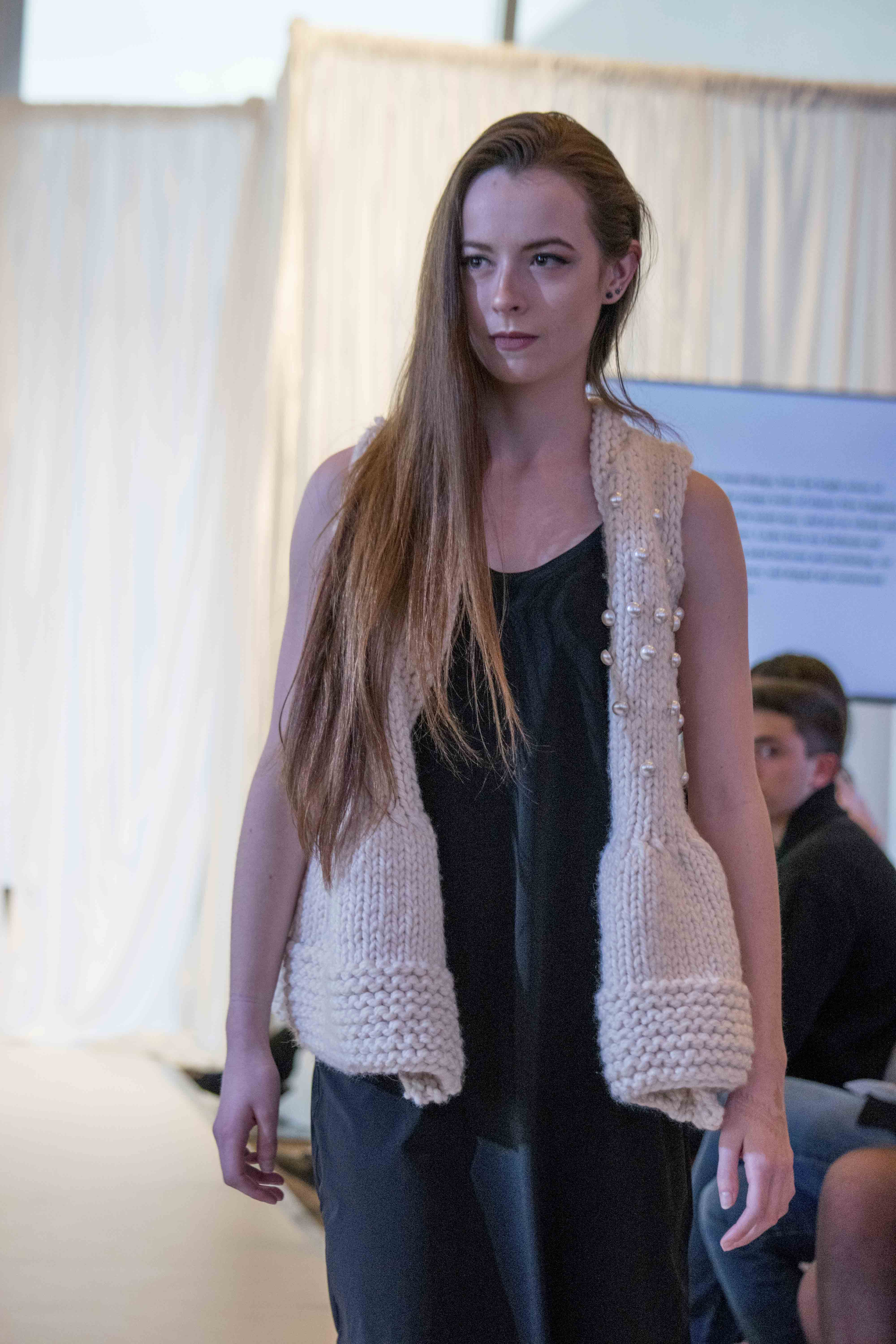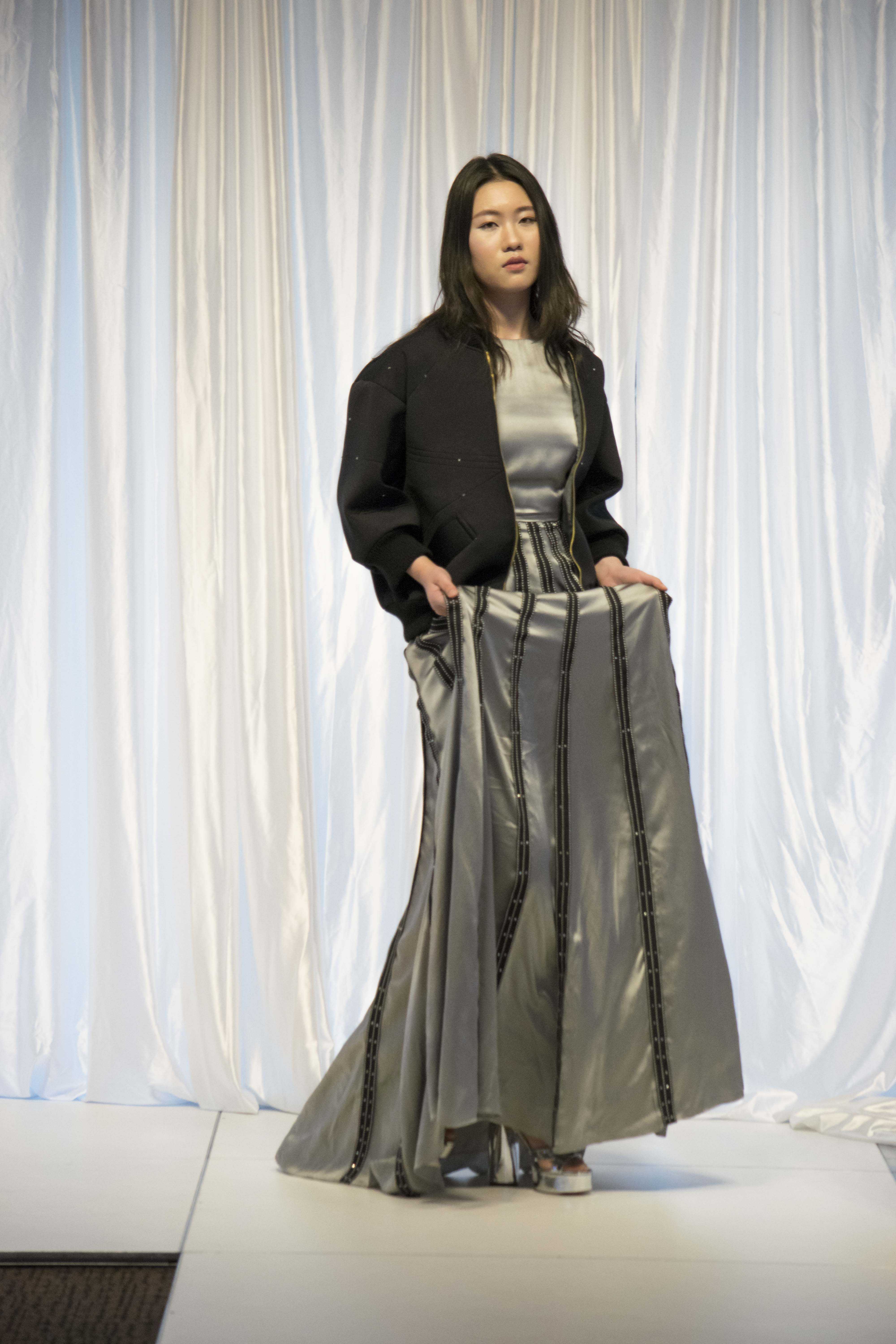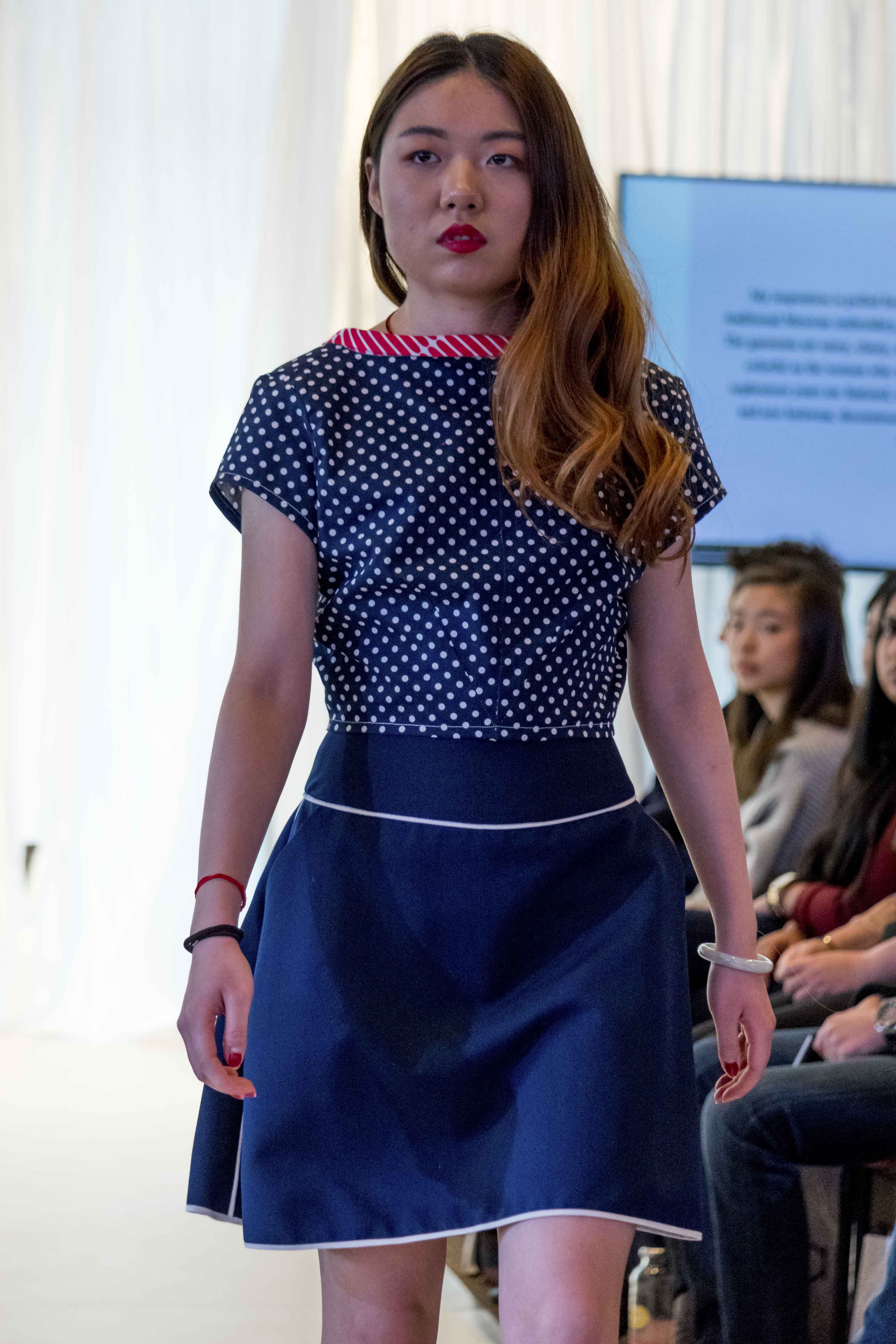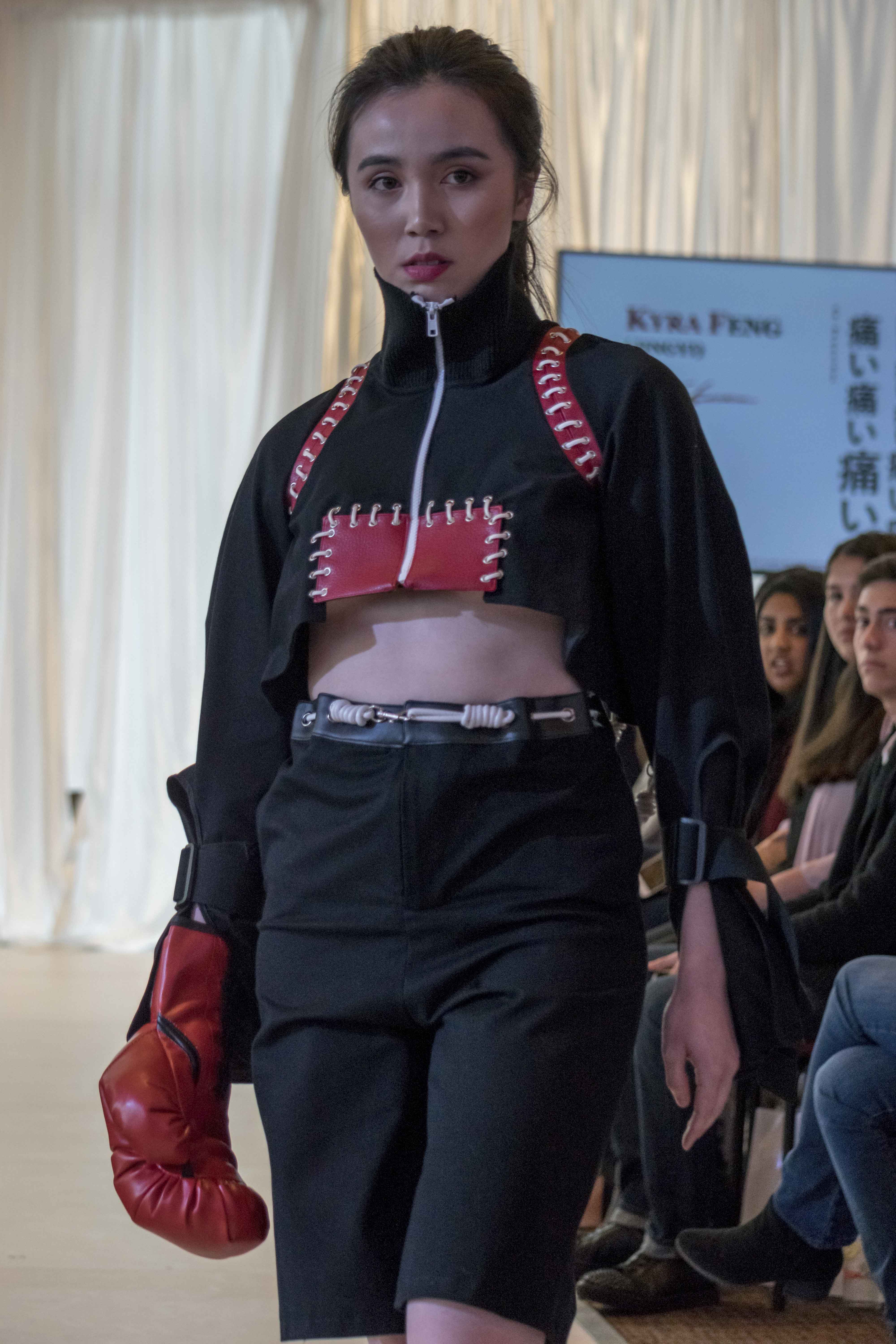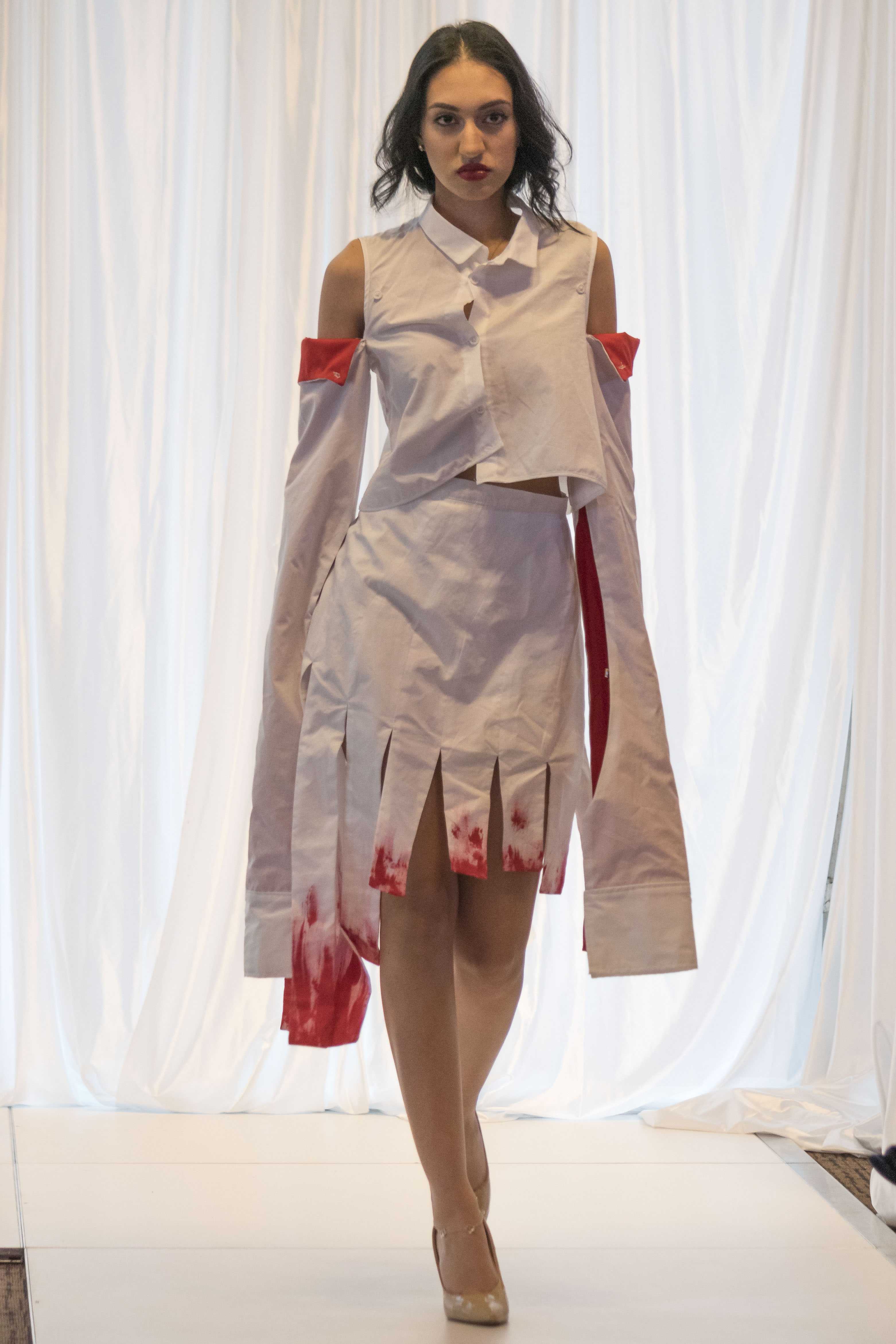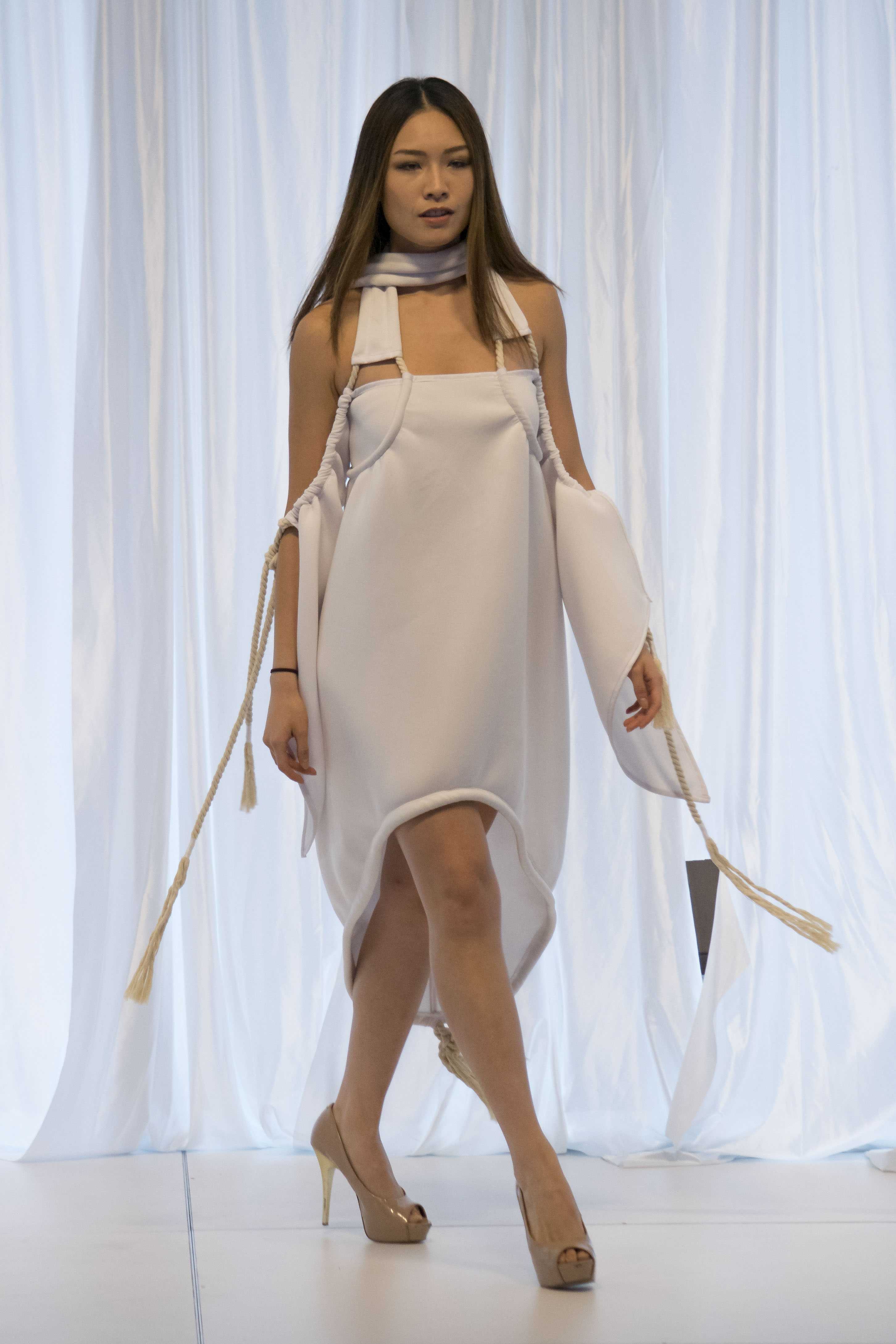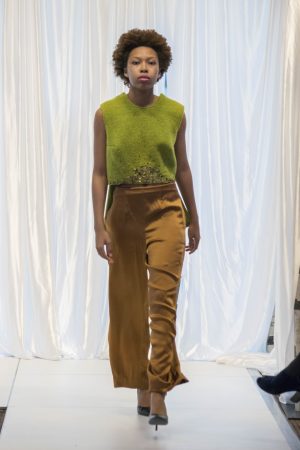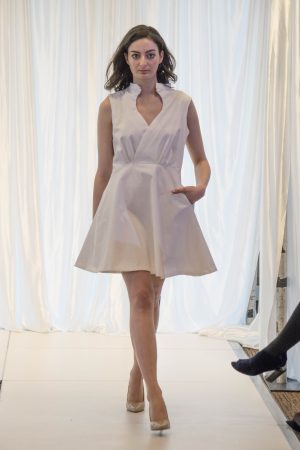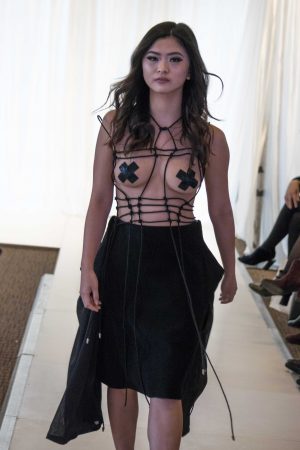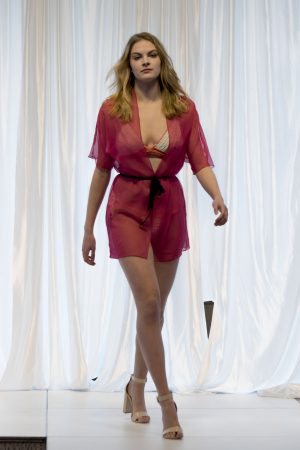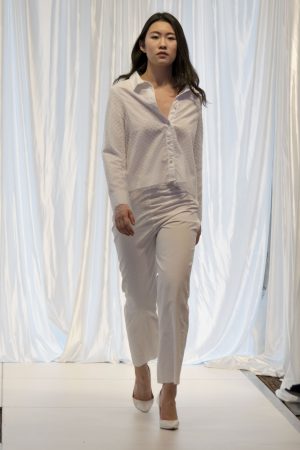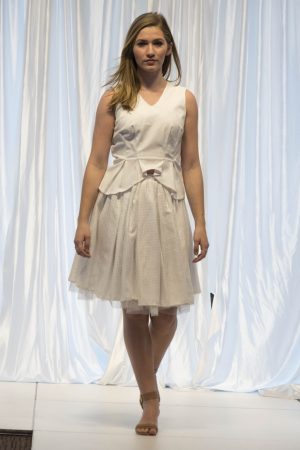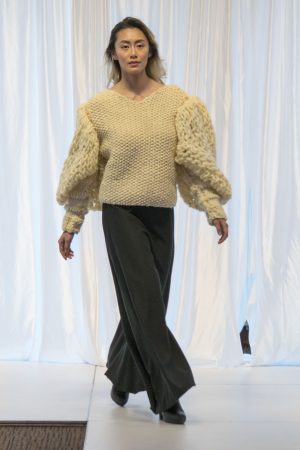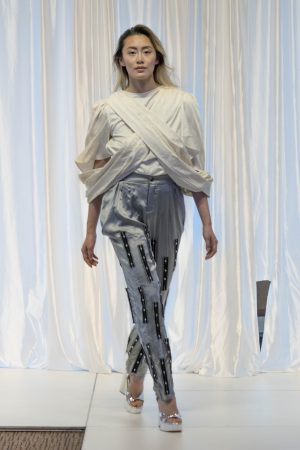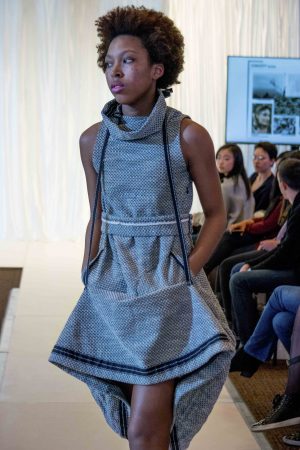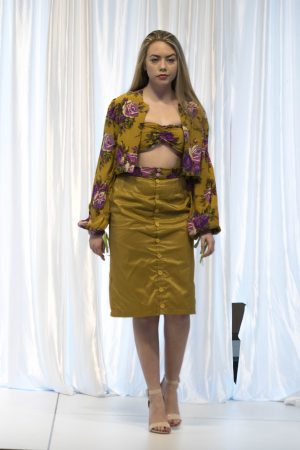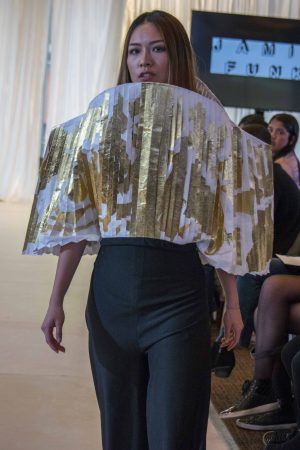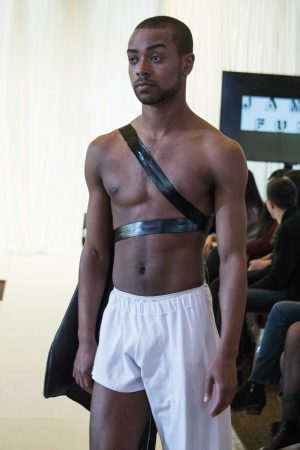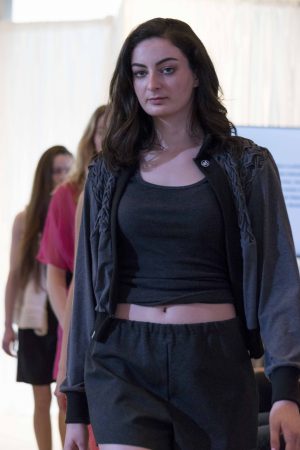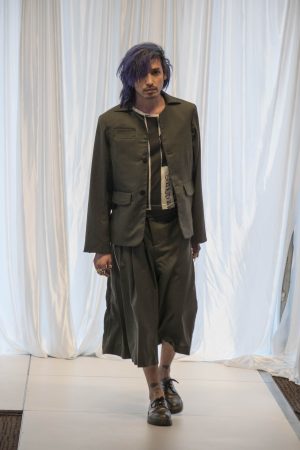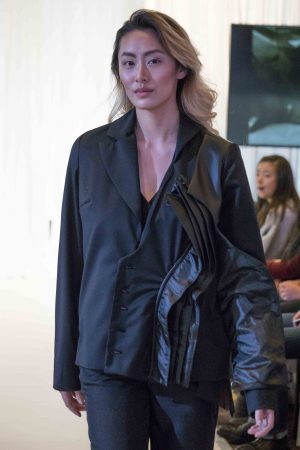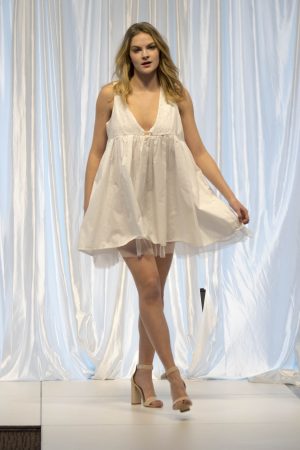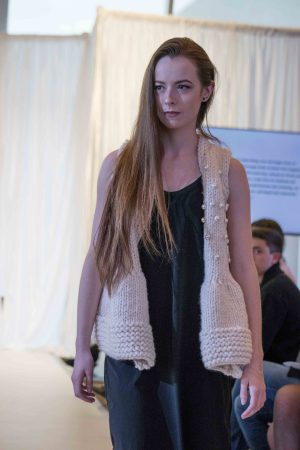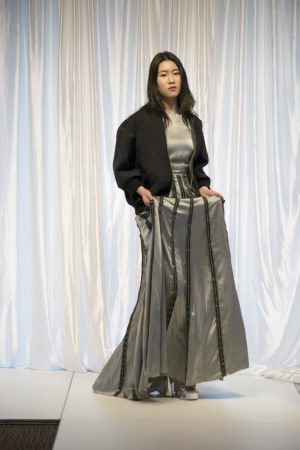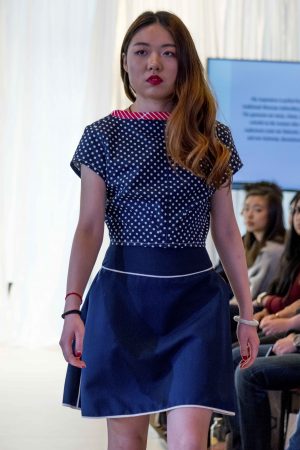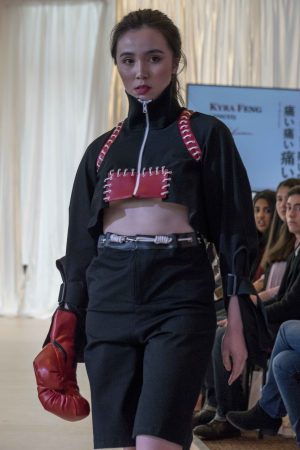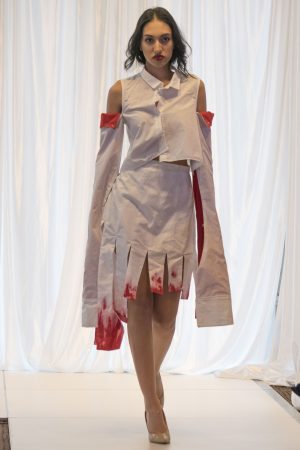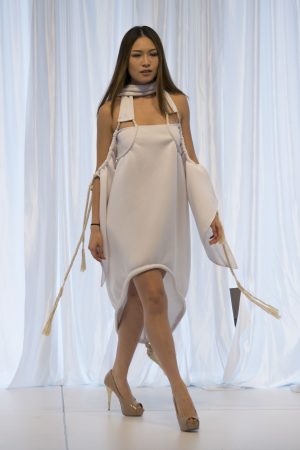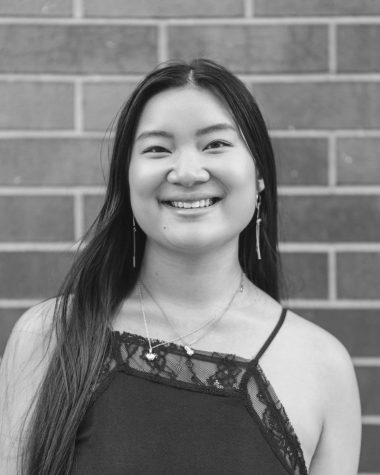FBA Fashion Show
March 27, 2017
A lively crowd of stylish students filled the Rosenthal Pavilion last Friday to support eight student designers —- selected from NYU, Parsons School of Design and Pratt Institute — at the Fashion Business Association’s annual Spring Fashion Show. The event married fashion and philanthropy, as all of the proceeds were donated to the Council of Fashion Designers of America Foundation, a not-for-profit organization that supports charity and operations within the industry. With members of NYU FBA’s e-board planning the event and students designing the collections to be modeled by other students, the runway show was a testament to students’ ability to create, support and succeed.
This year’s lineup included a range of skills and styles, with collections that highlighted the designers’ ambitions and revealed the effort that went into them.
Kyra Feng, Pratt Institute
Experimenting with construction, Feng’s collection featured cutouts, super cropped tops and cords. The first two looks featured ropes as straps and ties holding a white top, skirt and dress together. A cropped white button-down with exaggerated long sleeves and shoulder cutouts paired with a red-hemmed wide fringe skirt followed. The last look was a black cropped hoodie with red and white accents and an open back, held together by rope straps. This was worn with a black knee-length skirt and a pair of red boxing gloves.
Kayleigh Connor, Pratt Institute
Connor’s colorful collection was preppy and polished. Bright pink and navy made up most of the summery garments. A few knit pieces stood out — a chunky blue pullover, a cream vest and a triangle bikini. The range of pieces was varied, from a dressy long hot pink jacket to comfy short-shorts.
Victoria Mernard, NYU
A clean palette and the use of tulle throughout gave this light collection a strong, cohesive identity. Despite being all white, the individual ensembles still stood out. The collection included several dresses, offering different silhouettes and embellishments. The last look, a shift dress with a tulle overlay and delicate pearls spaced throughout, was simple and delicate.
Arrissara Ronnakittipisut, Pratt Institute
Ronnakittipisut focused on asymmetry, with a collection of mostly black garments. Each piece had at least one detail of origami-like folding, strategic layering or careful pleating. This created unique silhouettes that shifted with movement. One of the strongest looks was the most subdued — a black top with a popover layer and asymmetrical sleeves and hemline, paired with black pants with slits up to the shins.
Shelby Grochowski, Pratt Institute
The only completely menswear collection of the night, Grochowski presented detail-oriented designs. Wide leg cropped pants looked fresh on men, as the style was originally prominent in womenswear. Tunic length t-shirts also played with proportion and gave a grunge vibe to a couple looks. A short trench coat appeared standard on the front but revealed triple-layered back panels. Other jackets had straight silhouettes and abandoned collars, adding to the streamlined look.
Jamie Lee, Pratt Institute
Bondage undertones influenced Lee’s line of men’s and women’s clothing. A men’s leather jacket was worn only by asymmetrical straps across the model’s chest, letting the jacket fall on his back. Another female model wore a leather harness and not much else on top — only black tape “X’s” covered her breasts. A more conservative full-length white dress added an unorthodox detail with a clear plastic train.
Hannah Thomas, Pratt Institute
Thomas’ took advantage of prints and color to elevate her feminine collection. A coordinating bandeau and tapered leg pant set in a bright abstract print was polished, yet summery. With various shades of green and magenta, the color scheme was vaguely floral, which allowed it to have a natural and vibrant impression. The final look, a halter dress in ombre brown and white tulle with sequined accents at the sides, also gave the same vibe.
Jamileh Nadelmann, Parsons School of Design
Draping techniques and structural details defined Nadelmann’s womenswear line. The varied collection was unified by the black and white color scheme. A funnel neck dress was manipulated to have a high-low hem by two straps that went from the shoulders to the skirt, essentially holding up the front of the skirt. Another top had a basic foundation, but featured draped straps in an “X’” formation across the model’s bust and arms. This was paired with gray pants that had strips of black jeweled ribbon sewn on as a print. The ribbon accent was another unifying factor, as several of the looks included different iterations on the embellishment.
A version of this article appeared in the Monday, March 27 print edition. Email Sophie Shaw at [email protected].























































































































































